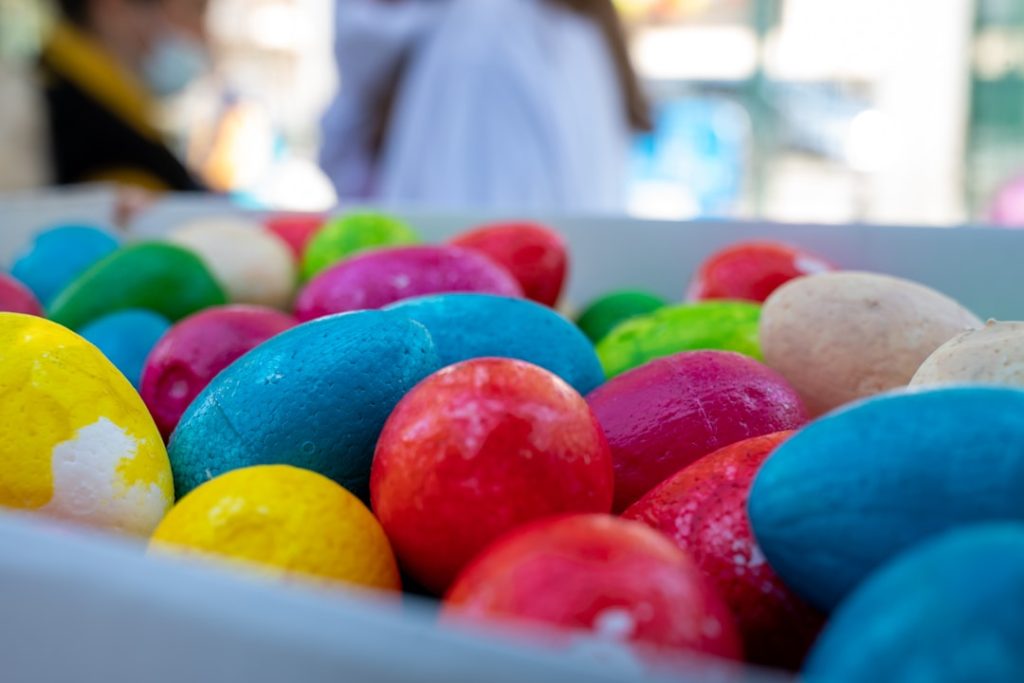Pekin ducks are a popular breed of domestic duck known for their large size, white feathers, and orange bills and feet. They are primarily raised for their meat and eggs, and are also commonly kept as pets or for exhibition. Pekin ducks are known for their friendly and docile nature, making them a great choice for beginners or those looking to raise ducks for the first time. They are also known for their high egg production, making them a valuable addition to any small farm or homestead.
Pekin ducks are a hardy breed that can adapt to a wide range of climates, making them suitable for breeding in various regions. They are also known for their fast growth rate, reaching market weight in just 7-8 weeks. This makes them an attractive option for those looking to raise ducks for meat production. Pekin ducks are also known for their excellent foraging abilities, making them well-suited to free-range or pasture-based systems. Overall, Pekin ducks are a versatile and valuable breed that can be a great addition to any small farm or homestead.
Table of Contents
Key Takeaways
- Pekin ducks are a popular breed known for their fast growth and high egg production
- When selecting breeding stock, look for healthy ducks with good body conformation and strong genetic traits
- Creating the right breeding environment involves providing adequate space, nesting areas, and access to clean water
- Breeding techniques such as natural mating or artificial insemination can be used to maximize breeding success
- Incubating Pekin duck eggs requires proper temperature, humidity, and turning for successful hatching
- Caring for ducklings involves providing warmth, proper nutrition, and protection from predators
- Common breeding challenges include infertility, egg production issues, and disease, which can be addressed through proper management and veterinary care
Selecting Breeding Stock
When it comes to breeding Pekin ducks, selecting the right breeding stock is crucial to ensure the health and productivity of the flock. When choosing breeding stock, it’s important to select ducks that are healthy, free from genetic defects, and have good conformation. Look for ducks that have a strong build, with broad chests, straight legs, and well-proportioned bodies. It’s also important to select ducks that have good temperament, as this can impact the behavior and productivity of the offspring.
In addition to physical traits, it’s also important to consider the genetic background of the breeding stock. Look for ducks that come from healthy and productive lines, with a history of good egg production and fast growth rates. It’s also important to avoid inbreeding, as this can lead to genetic defects and health problems in the offspring. By carefully selecting breeding stock with strong genetics and good conformation, you can help ensure the health and productivity of your Pekin duck flock.
Creating the Right Environment for Breeding
Creating the right environment for breeding is essential to the success of your Pekin duck breeding program. Ducks thrive in a clean and spacious environment with access to fresh water and plenty of room to forage and exercise. When it comes to breeding, it’s important to provide nesting boxes or areas where ducks can lay their eggs in a quiet and secluded space. This will help reduce stress and encourage natural breeding behaviors.
It’s also important to provide a balanced diet that meets the nutritional needs of breeding ducks. A diet high in protein is essential for egg production and fertility, so be sure to provide a quality feed that meets these requirements. Additionally, providing supplemental calcium can help support eggshell formation and overall reproductive health. Finally, it’s important to monitor the breeding environment for signs of stress or disease, as these can impact fertility and overall breeding success. By creating a clean, spacious, and well-balanced environment for breeding, you can help ensure the health and productivity of your Pekin duck flock.
Breeding Techniques and Practices
When it comes to breeding Pekin ducks, there are several techniques and practices that can help improve breeding success. One common technique is natural mating, where ducks are allowed to mate freely in a natural setting. This can be an effective way to encourage natural breeding behaviors and improve fertility rates. Another technique is artificial insemination, which can be used to control breeding and improve genetic diversity within the flock. This technique is often used in commercial breeding operations to ensure high fertility rates and genetic diversity.
In addition to mating techniques, it’s important to monitor the breeding flock for signs of fertility and reproductive health. Keep an eye on egg production, as low egg production can be a sign of fertility issues or health problems. It’s also important to monitor the behavior of the breeding ducks, as stress or aggression can impact fertility rates. By implementing effective breeding techniques and practices, you can help improve the overall health and productivity of your Pekin duck flock.
Incubating Pekin Duck Eggs
Incubating Pekin duck eggs is an important part of the breeding process, and there are several key factors to consider when incubating eggs. The temperature and humidity levels in the incubator are crucial for successful egg development. The ideal temperature for incubating duck eggs is around 99.5 degrees Fahrenheit, with a humidity level of around 55-60%. It’s important to monitor these levels closely throughout the incubation period to ensure optimal conditions for egg development.
It’s also important to handle the eggs carefully during the incubation process, as rough handling can damage the developing embryos. Turn the eggs regularly to prevent the embryos from sticking to the shell membrane, which can hinder proper development. Additionally, it’s important to monitor the development of the embryos by candling the eggs regularly. This involves shining a bright light through the egg to check for signs of development, such as blood vessels or movement. By carefully monitoring and maintaining optimal conditions during the incubation process, you can help ensure a successful hatch and healthy ducklings.
Caring for Ducklings

Once the ducklings have hatched, it’s important to provide them with proper care and nutrition to ensure their health and growth. Keep the ducklings in a warm brooder with access to clean water and a balanced feed that meets their nutritional needs. It’s important to monitor the temperature in the brooder closely, as ducklings require a warm environment to thrive. Provide a heat source such as a heat lamp or heating pad to maintain a temperature of around 85-90 degrees Fahrenheit for the first week, gradually reducing the temperature as the ducklings grow.
It’s also important to provide plenty of space for the ducklings to exercise and socialize, as this can help promote healthy growth and development. Additionally, monitor the ducklings closely for signs of illness or stress, as early intervention can help prevent health problems from escalating. By providing proper care and nutrition, you can help ensure the health and well-being of your Pekin ducklings as they grow into healthy adults.
Common Breeding Challenges and Solutions
Breeding Pekin ducks can come with its own set of challenges, but there are solutions that can help overcome these obstacles. One common challenge is low fertility rates, which can be caused by factors such as stress, poor nutrition, or genetic issues. To address this challenge, it’s important to provide a well-balanced diet that meets the nutritional needs of breeding ducks, as well as a clean and spacious environment that minimizes stress.
Another common challenge is egg infertility or poor hatch rates, which can be caused by factors such as improper incubation conditions or genetic issues. To address this challenge, it’s important to carefully monitor incubation conditions and handle eggs with care to ensure optimal development. Additionally, selecting breeding stock with strong genetics and good fertility rates can help improve hatch rates over time.
Overall, breeding Pekin ducks can be a rewarding endeavor with proper knowledge and care. By understanding their unique characteristics, selecting the right breeding stock, creating a suitable environment for breeding, implementing effective breeding techniques and practices, incubating eggs properly, caring for ducklings, and addressing common breeding challenges with appropriate solutions, you can successfully breed healthy Pekin ducks on your farm or homestead.
If you’re interested in learning more about Pekin ducks breeding, you might also want to check out this informative article on how many eggs geese lay. Understanding the breeding habits of different poultry can provide valuable insights for anyone looking to raise ducks or other birds.
FAQs
What is the breeding season for Pekin ducks?
Pekin ducks typically breed in the spring and early summer months, with peak breeding activity occurring from March to June.
How do Pekin ducks mate?
Pekin ducks mate through a process called “cloacal kissing,” where the male mounts the female and they align their cloacas for copulation.
How many eggs do Pekin ducks lay?
Pekin ducks are prolific layers and can lay anywhere from 140 to 200 eggs per year, with peak egg production occurring in the first year of laying.
How long does it take for Pekin duck eggs to hatch?
Pekin duck eggs have an incubation period of approximately 28 days, after which the ducklings will hatch.
What is the best way to care for Pekin ducklings after hatching?
Pekin ducklings should be kept warm and dry, provided with access to clean water and starter feed, and protected from predators. They should also be vaccinated against common duck diseases.
At what age do Pekin ducks reach sexual maturity?
Pekin ducks typically reach sexual maturity at around 5 to 6 months of age, at which point they are ready to breed.
Meet Walter, the feathered-friend fanatic of Florida! Nestled in the sunshine state, Walter struts through life with his feathered companions, clucking his way to happiness. With a coop that’s fancier than a five-star hotel, he’s the Don Juan of the chicken world. When he’s not teaching his hens to do the cha-cha, you’ll find him in a heated debate with his prized rooster, Sir Clucks-a-Lot. Walter’s poultry passion is no yolk; he’s the sunny-side-up guy you never knew you needed in your flock of friends!







